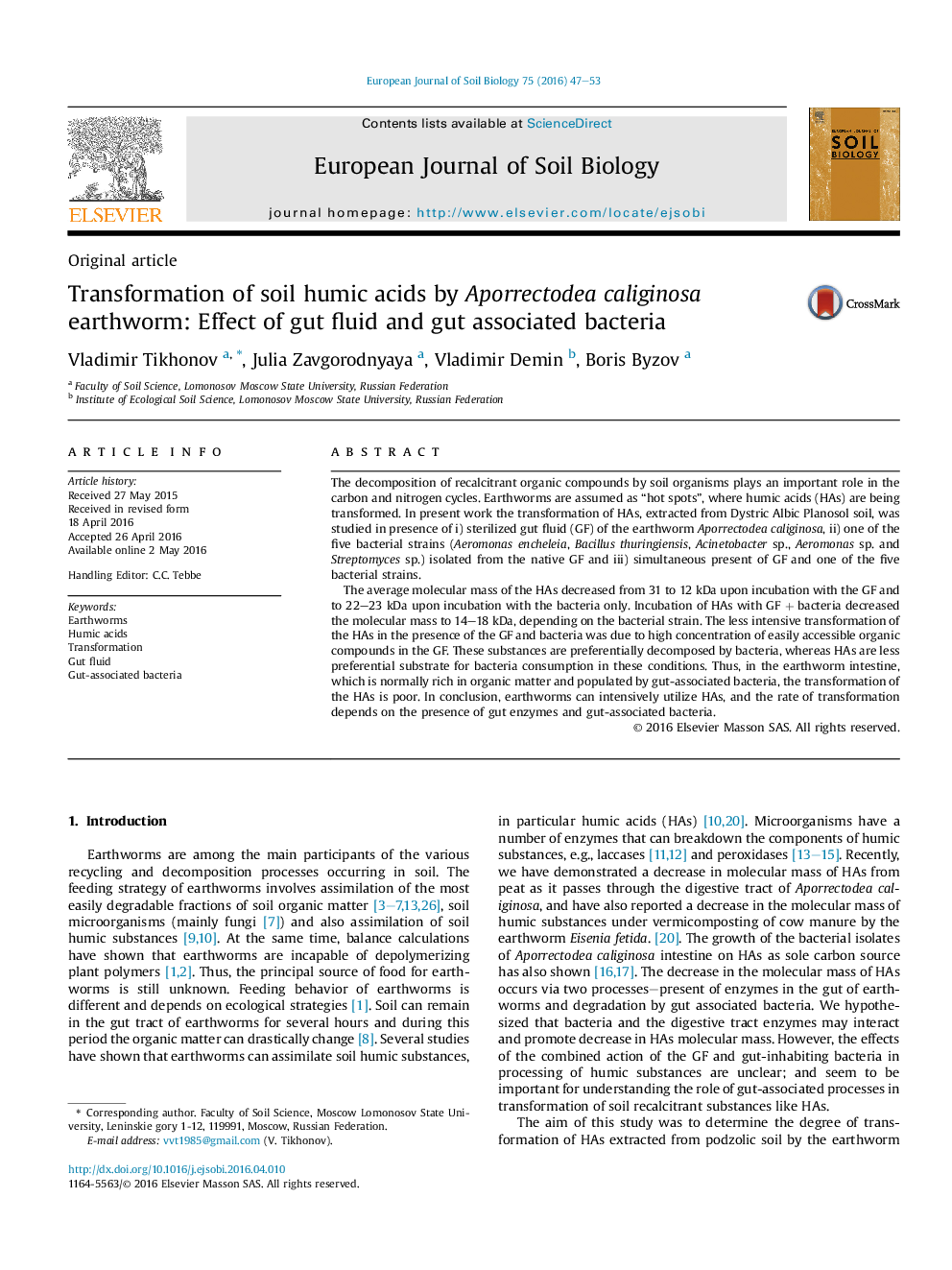| Article ID | Journal | Published Year | Pages | File Type |
|---|---|---|---|---|
| 4391636 | European Journal of Soil Biology | 2016 | 7 Pages |
•Gut fluid of earthworms (GF) and bacteria, isolated from GF, decay humic acids (HAs).•HAs transformation is more dramatic in bacteria absence.•It could be connected with presence of easily accessible organic compounds in GF.•Bacteria preferably consume other carbon compounds present in the GF.•HAs, being more robust, are less transformed.
The decomposition of recalcitrant organic compounds by soil organisms plays an important role in the carbon and nitrogen cycles. Earthworms are assumed as “hot spots”, where humic acids (HAs) are being transformed. In present work the transformation of HAs, extracted from Dystric Albic Planosol soil, was studied in presence of i) sterilized gut fluid (GF) of the earthworm Aporrectodea caliginosa, ii) one of the five bacterial strains (Aeromonas encheleia, Bacillus thuringiensis, Acinetobacter sp., Aeromonas sp. and Streptomyces sp.) isolated from the native GF and iii) simultaneous present of GF and one of the five bacterial strains.The average molecular mass of the HAs decreased from 31 to 12 kDa upon incubation with the GF and to 22–23 kDa upon incubation with the bacteria only. Incubation of HAs with GF + bacteria decreased the molecular mass to 14–18 kDa, depending on the bacterial strain. The less intensive transformation of the HAs in the presence of the GF and bacteria was due to high concentration of easily accessible organic compounds in the GF. These substances are preferentially decomposed by bacteria, whereas HAs are less preferential substrate for bacteria consumption in these conditions. Thus, in the earthworm intestine, which is normally rich in organic matter and populated by gut-associated bacteria, the transformation of the HAs is poor. In conclusion, earthworms can intensively utilize HAs, and the rate of transformation depends on the presence of gut enzymes and gut-associated bacteria.
Graphical abstractFigure optionsDownload full-size imageDownload as PowerPoint slide
